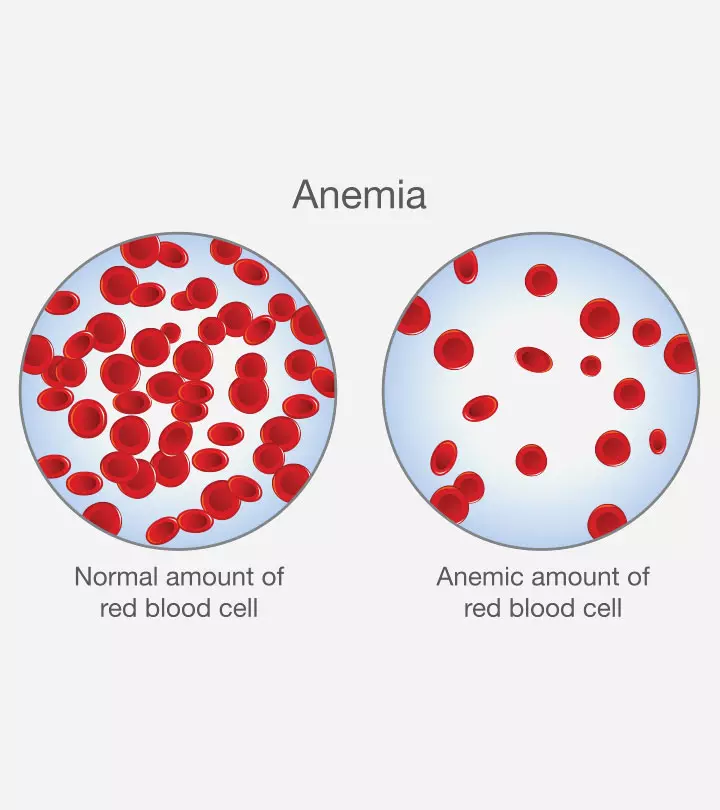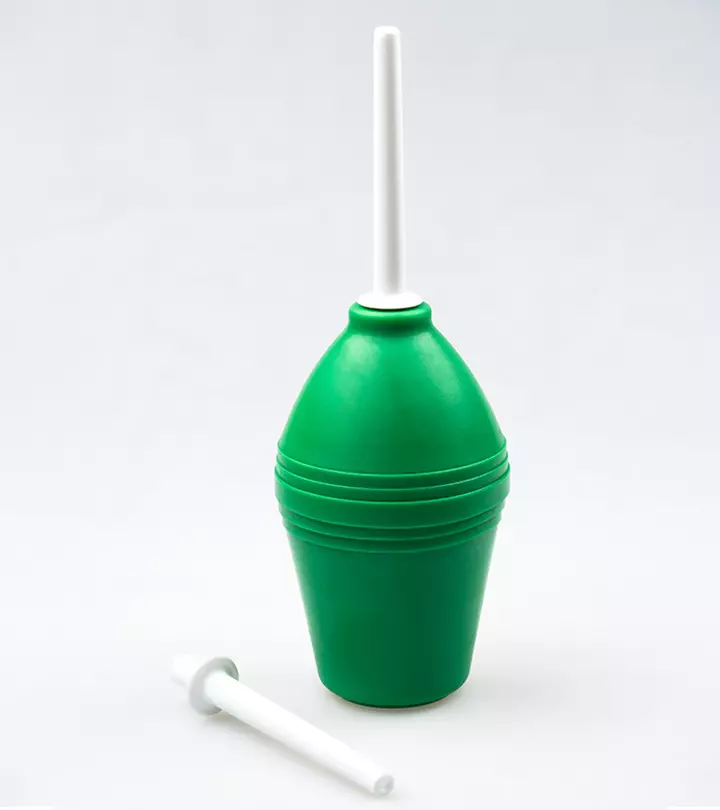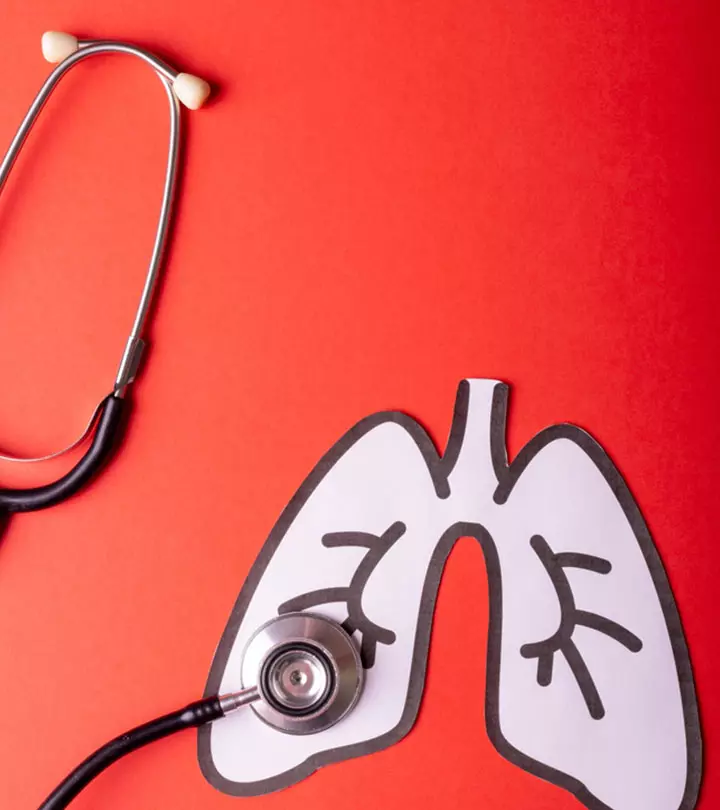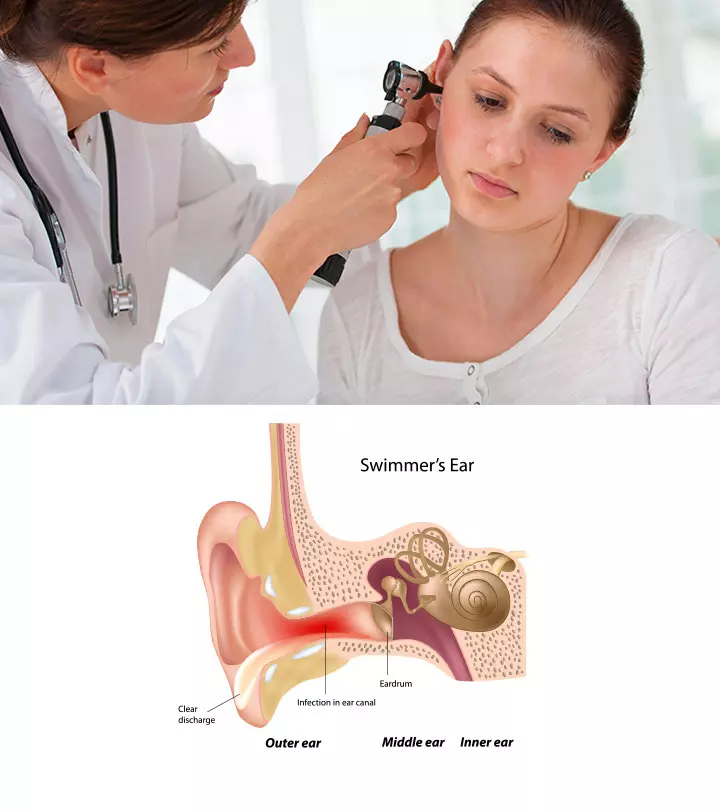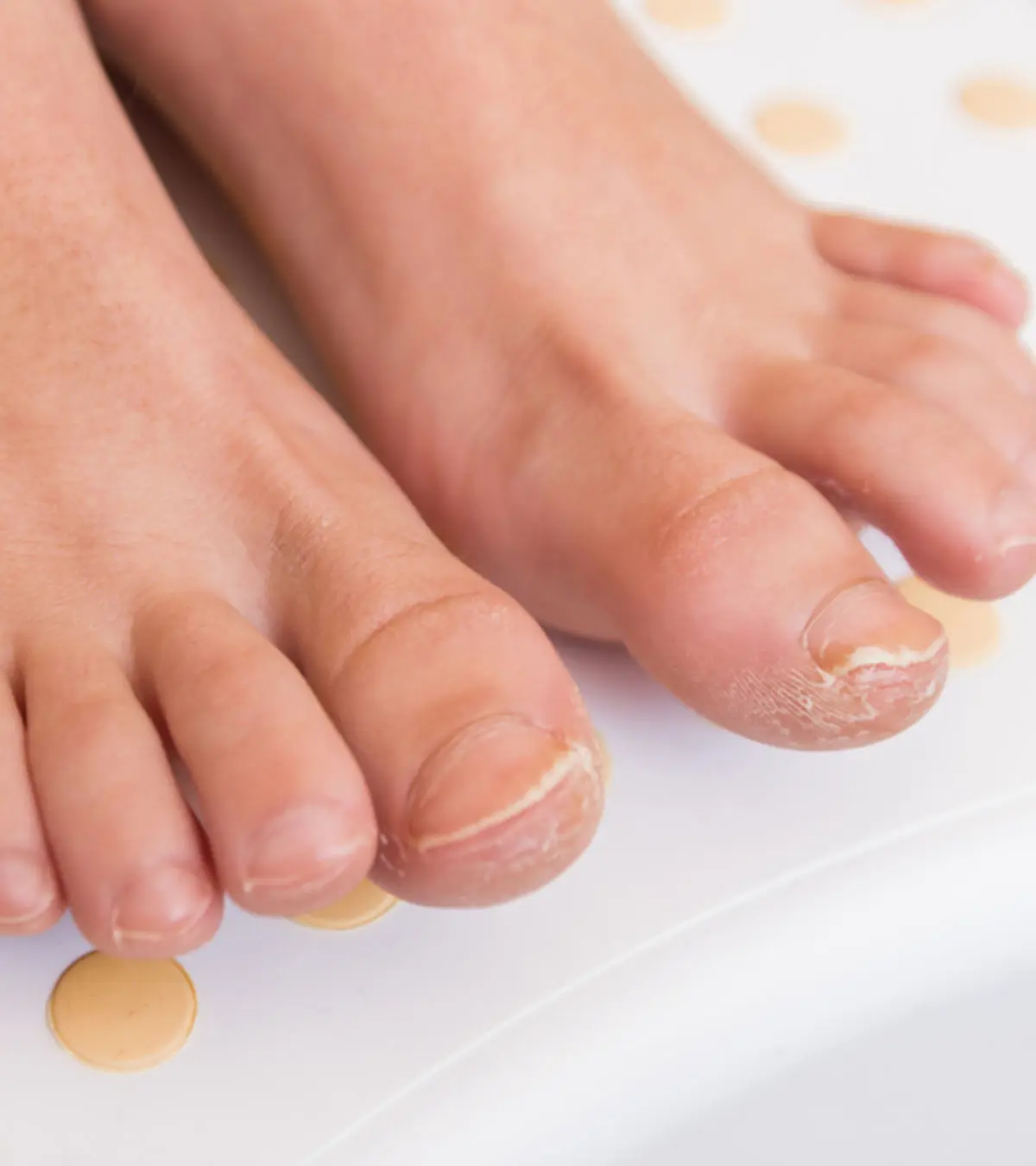
Image: Shutterstock
Fungal nail infection, also called onychomycosis, may affect both fingernails and toenails. While a common occurrence in adults, fungal nail infection in children is rare. Only 2.5% of all babies and children are known to be affected by the fungal infection. However, the frequency of fungal nail infections in children has increased over the last few years (1)(2). Read this post as we bring to you the causes, signs and symptoms, home remedies, treatment, and prevention of fungal nail infections in children.

Key Pointers
- Fungal nail infections in children can be caused by restricted ventilation in shoes, sharing towels, weakened immune system, and nail injuries.
- Symptoms include changes in nail color, brittle or thinning nails, and debris under nails.
- Treatment options include oral medications, topical antifungal treatments, laser treatment, photodynamic therapy, and nail removal.
- Prevention methods include keeping feet and hands dry, wearing proper shoes, avoiding sharing personal items, and taking care of existing nail injuries.
Causes Of Fungal Nail Infection In Children
Fungal infection is caused by a variety of fungi belonging to the groups of dermatophytesiGroup of fungi that uses keratin protein to grow and is limited to skin, nail, and hair infections. , non-dermatophytic molds, and yeasts. They cause infection when they have the right conditions to attach and propagate on a nail. The following factors can cause a fungus to infect a fingernail or toenail (3) (4) (5).
- Wearing shoes with restricted ventilation and socks that do not absorb perspiration, or boots all day may cause fungal toenail infection due to sweat.
- Sharing towels and napkins with others may cause the child to catch the fungus.
- Children who play in water or swim may have their hands and feet damp for a long time, thus increasing the risk of fungal infection.

- Children with diabetes, suppressed or weakened immune system, and problems with the circulation system may be at a higher risk.
- Some conditions, like psoriasisiAn autoimmune disorder that makes the skin itchy and scaly. and Down syndromeiA genetic condition where a person has an extra chromosome apparent through facial features, and speech and language problems. , increase the risk. Existing nail injuries may also increase the risk.
- An existing athlete’s foot in children (fungal infection in the foot) may cause the spread of infection to other toenails, from where it could reach fingernails.
- Humid and warm environments may increase the overall risk of fungal infection.
Signs And Symptoms Of Fungal Nail Infection In Children
The signs of toenail fungal infection vary from one child to another. While some may have toenail discoloration, others could have dull nails. Some of the common signs include (6):
- The color of the nail might change to yellow, brown, or white
- The nail may get dry or crumble or start to come off
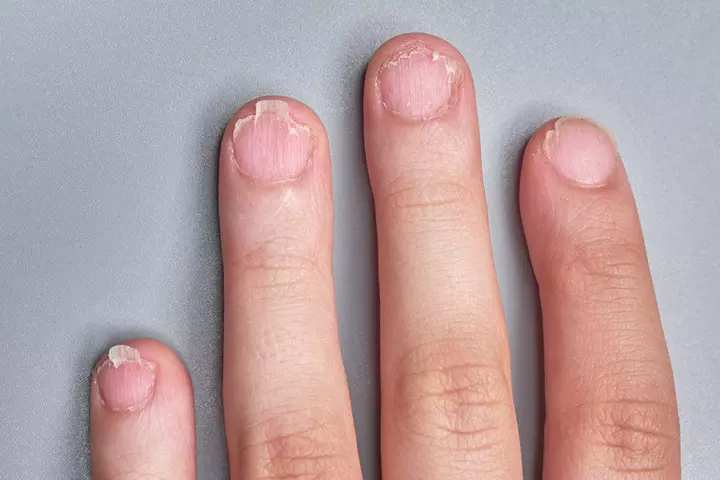
- Nails may either get thinner or thicker
- Debris may be forming under the nails
- Nails may crumble or become rough
- Dull or no shine in the nails
However, it is important to note that several other conditions, such as bacterial infection or psoriasis, may mimic the signs of fungal nail infection. While some of these conditions may not pose any health risks and clear out on its own, many conditions may require prompt medical treatment, thus, requiring proper diagnosis for effective management (19).
Pradeep Goyal, an entrepreneur and a father, shares about the time when he thought his child had a fungal nail infection. He shares, “My son has got nail’s infection. In fact, we were not sure if that was an infection or something else. His nails stop growing. It started with the nail of his thumb, we thought that he got some injury through some door or drawer where his nail got broken from the root. Then we saw the same with his finger and we were afraid if this would spread to all his fingers. Our fear was not wrong, it did. One by one, all his fingers stop creating nails. We could clearly see the skin below the root of the nail, then new nails started growing under the old nails. It was ugly and scary.” Sharing further, he says, “It was on our priority and we visited our pediatric on the very next day after reaching back home… She (the doctor) carefully examined my child and recommend treatment after analysis. She said that nails got some kind of fungal infection. The fungus grows in a hot & humid environment and infection can also happen from the soil (i).”
 Quick tip
Quick tipWhen To Seek Medical Help
Take your child to a doctor for immediate care in the following cases (17) (18).
- Discoloration of nails
- Pain or discomfort in the affected nail, particularly when applying pressure
- Inflammation, itchiness, swelling, redness, or cracks on the surrounding skin of the affected nail
- A blister with pus next to the affected nail
Diagnosis Of Fungal Nail Infection In Children
The dermatologist or doctor can diagnose fungal infection in nails through various steps:
- Visual examination of the nail and skin around it to identify the symptoms of fungal infection.
- A sample of the nail debris could be collected by scraping the nail and analyzing it under a microscope. The debris can be examined under the microscope after a drop of 10 to 20% KOH (potassium hydroxide) solution is added to it. This test confirms the presence of fungal nail infection and treatment initiation (20) (21).
- Fungal culture tests may be done to identify the specific fungus and fungal infection (7). It can help conclusively diagnose the type of fungal infection.
- In rare cases, the doctor might recommend a biopsy to rule out other nail conditions.
- The American Family Physician suggests another diagnostic test which analyzes the nail clippings using a periodic acid-Schiff stain (10% buffered formalin) for the presence of Tinea unguium in children. While this diagnostic method is most accurate, it is costly and therefore, is not used commonly (20) (21).
Treatment And Home Remedies For Fungal Nail Infection
The doctor may prescribe any of the following treatment methods for onychomycosis treatment (1).
- Oral medication: These are antifungal medicines administered orally. Common examples of these medicines are griseofulvin and terbinafine. Griseofulvin is the only drug that is approved by the US Food and Drug Administration (FDA) for pediatric use, but the medicine does not cure all cases of infection. Terbinafine is more effective but not approved by the FDA for pediatric use. Some studies find the drug to be safe for children. A doctor may consider administering terbinafine in the case of older children and teens. A joint study conducted by Stony Brook University and Weill Cornell Medicine in the US has revealed encouraging cure rates of 59% for fingernail infections and 38% for toenail infections (21). Nevertheless, never self-medicate with these medicines.
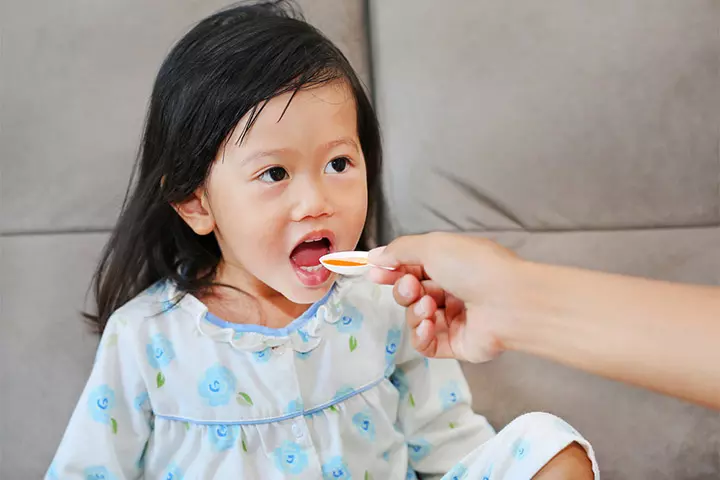
- Topical treatment: It involves topical application of antifungal ointments, creams, and lotions. The US FDA approves the use of the medicines Tavaborole, Amorolfine, Efinaconazole, and Ciclopirox to treat fungal nail infection. Your child’s doctor will prescribe the medicine needed to treat the fungal nail infection in the child (1) (7). The CDC further emphasizes on application of the topical antifungals exactly and precisely as described in the packaging or prescribed instructions by the healthcare professional (22).
- Combination therapy: A doctor may consider the use of oral and topical antifungal medicines together. Combination therapy may be considered if one mode of treatment does not work or if the infection is severe. Combination therapy may work faster than using a single plan.
- Nonpharmacological approaches include:
- Laser treatment: In case of persistent fungal nail infection that won’t go away easily, the doctor may suggest laser treatment to destroy the nail fungus. However, this method is costly and requires 1-3 session for complete removal (19).
- Photodynamic therapyiiA treatment involving a combination of light and light-activated medications to get rid of abnormal cells, such as in cancer. : This treatment method is often used in combination with topical antifungal therapy to allow the absorption of the drug to the nail more effectively (19).
- Surgical nail removal: The doctor may suggest the removal of the nail when other methods of treatment do not yield results. Nail removal can be achieved by the application of chemicals that cause the nail to fall. If this process is not possible, then the doctor may perform minor surgery to remove the infected nail from the nailbed to treat a nail bed infection.
- Nail removal: The doctor may suggest the removal of the nail when other methods of treatment do not yield results. Nail removal can be achieved by the application of chemicals that cause the nail to fall. If this process is not possible, then the doctor may perform minor surgery to remove the infected nail from the nailbed to treat a nail bed infection.
Some substances and compounds can be applied topically to the affected nail at home. These home remedies for fungal nail infections have anecdotal evidence, but more research may be needed to support them scientifically.
- A study found that the topical application of Vicks VapoRub for children could treat the affected nail. The cure happened when Vicks VapoRub was applied once a day for 48 weeks (11 months) (8).
- Application of tea tree oil with a cotton swab twice daily for six months may help provide relief (9).
- Regular application of oregano oil may help treat toenail fungus. Oregano oil contains a compound called thymol, which is known for its antifungal properties (10).
- Snakeroot extract contains antifungal properties. The topical application could help treat fungal nail infections (11).
- Application of plain or white vinegar may also be useful in treating fungal nail infection (12).
 Quick tip
Quick tipIf your doctor prescribes a medicine for the infection, then stop the use of home remedies since it may interfere with the effective action of the medicinal compound.
Can Fungal Nail Infection Be Prevented?
From underlying conditions like diabetes to environmental factors, such as swimming pools and tight shoes, fungal nail infections in children may occur due to various reasons. However, it is possible to prevent fungal nail infection in children by following a few simple measures (23) (19):
- Parents should see that their children stay away from pets and individuals who have a fungal infection.
- Soap, shampoos, towels, and combs of your children should not be used by others to prevent the spread of fungal infection from others.
- Teach your children about good hygiene practices. For instance, washing hands with soap, keeping nails trimmed, and changing socks regularly can help prevent infections. Have them wear socks made of absorbent material, such as cotton.
- If your child sweats a lot or you live in a humid climate, then you may consider using talcum powder to absorb perspirationiRelease of fluids from the body’s sweat glands, commonly called sweating. . Also, teach them to keep their foot clean and dry.
- Choose open-toed shoes and flip-flops for children.
- Avoid going barefoot in public places like gyms, sports changing rooms, and swimming pool areas.
- Avoid putting unhygienic and cheap quality nail cosmetics on your child’s nails.
- In case of underlying conditions, such as diabetes, manage and control the diseases effectively.
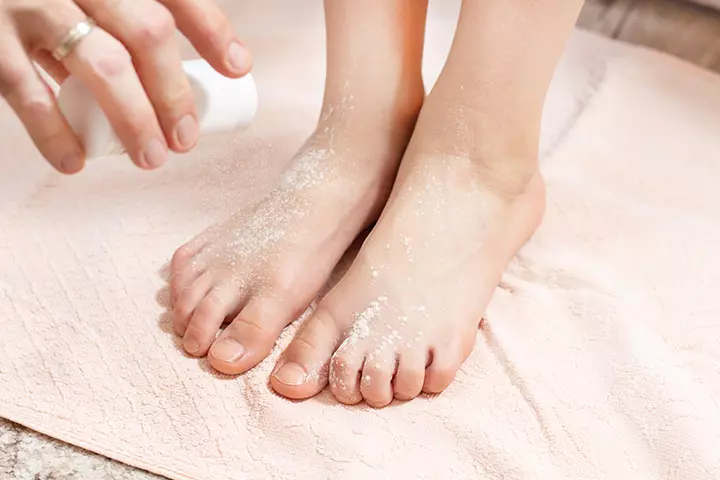
 Did you know?
Did you know?Frequently Asked Questions
1. Can apple cider vinegar help get rid of nail fungus?
Apple cider vinegar is believed to lower the skin’s pH and thereby reduce the levels of fungus on the nail and feet thereby eliminating the infection. However, there is no specific medical research that claims apple cider vinegar to be effective against toenail fungus (14).
2. Do nails grow back after a fungal infection?
Yes, nails usually grow back after an infection has been successfully treated, however, the nail may appear infected or unhealthy until it grows out. Fingernails may take four to six months, while toenails usually take 12 to 18 months to grow out (7).
3. What foods should my child avoid if they have a fungal infection?
A diet high in refined carbohydrates, sugar, or yeast may make them prone to fungal infections such as candidiasis (15). Reduce your child’s intake of these foods when they already have an infection.
4. Can a vitamin deficiency cause toenail fungus?
A deficiency of vitamin D may make you more susceptible to fungal infections (16)
5. Is nail fungus contagious?
According to board-certified dermatologist Dr. Alpana Mohta, “Nail fungus, or onychomycosis, is contagious. It can spread through direct contact with infected nails or indirectly through contact with contaminated surfaces like floors, shoes, or nail clippers.”
Fungal nail infection may develop in children when their hands and feet are damp for long, weakened immune systems, or live in warm and humid environments. As a result, they may experience a change in color of the nails, rough nails, or debris formed under the nails. Consult a doctor for any fungal nail infection. The treatment procedure may involve medications, topical ointments, or laser therapy. Home remedies, such as tea tree oil and oregano oil may also work. It is important to follow the full course of treatment suggested by the doctor to prevent a relapse of the infection. Also, maintaining good hygiene and managing perspiration can minimize the spread of infection.
Infographic: Treatment And Home Remedies For Fungal Nail Infection
Fungal nail infections are caused by fungi that live on the dead tissue of the hair, nails, and outer skin layers. While antifungal medications are the most common treatment for fungal nail infections, several home remedies help deal with these infections. Explore the most effective ones in the infographic below.
Some thing wrong with infographic shortcode. please verify shortcode syntax
Find out how fungal nail infections can lead to nail discoloration, thickening, and crumbling. Explore causes, symptoms, diagnosis, and treatment options in this informative video.
Personal Experience: Source
MomJunction articles include first-hand experiences to provide you with better insights through real-life narratives. Here are the sources of personal accounts referenced in this article.
i. I learned an important lesson from my son’s nail infection;https://medium.com/@pardeepg/i-learned-an-important-lesson-from-my-son-s-nail-infection-4a0eecaf726e
References
1. D. Arevalo; Safe Treatments for Nail Fungus Infections for Infants and Kids; Global Nail Fungus Organization (2017)
2. D. M. Kim, M. K. Suh, and G. Y. Ha; Onychomycosis in Children: An Experience of 59 Cases; Annals of Dermatology (2013)
3. Fungal Infections of Fingernails and Toenails; American Academy of Family Physicians (2001)
4. Fungal Nail Infections; HealthLink British Columbia
5. Fungal Nail Infection; University of Missouri-Kansas City
6. Nail Fungus: Signs And Symptoms; American Academy of Dermatalogy7. Nail Fungus: Diagnosis And Treatment; American Academy of Dermatalogy
8. R. Derby et al.; Novel Treatment of Onychomycosis using Over-the-Counter Mentholated Ointment: A Clinical Case Series; Journal of the American Board of Family Medicine (2011)
9. D. AbdelHamid et al.; Evaluation of the Therapeutic Efficacy of Tea Tree Oil in Treatment of Onychomycosis; International Journal of Pharmacognosy and Phytochemical Research (2017)
10. Does oil of oregano help toe nail fungus and what natural ointment can I buy to help my toe?; Institute for Preventive Foot Health
11. D. P. Westerberg and M. J. Voyack; Onychomycosis: Current Trends in Diagnosis and Treatment; American Academy of Family Physicians (2013)
12.The Ultimate Guide to Understanding and Treating Finger and Toenail Fungus; Global Nail Fungus Organization
13. Twelve Ways To Prevent Another Nail Infection; American Academy of Dermatology
14. Darshna Yagnik et al.; Antimicrobial activity of apple cider vinegar against Escherichia coli, Staphylococcus aureus and Candida albicans; downregulating cytokine and microbial protein expression; Scientific Reports, Nature (2018).
15. Candidiasis; Cleveland Clinic
16. Pedro Henrique França Gois et al.; Vitamin D and Infectious Diseases: Simple Bystander or Contributing Factor?; NCBI (2017)
17. Fungal Nail Infection; NHS inform
18. Nail Infections: Fingernails And Toenails; Raising Children Network (Australia) 19. Fungal nail infections; DermNet
20. MARK D. ANDREWS and MARIANTHE BURNS; Common Tinea Infections in Children; American Family Physician (2008).
21. Julianne M Falotico and Shari R Lipner; Updated Perspectives on the Diagnosis and Management of Onychomycosis; Clinical, cosmetic and investigational dermatology (2025).
22. Treatment of Ringworm and Fungal Nail Infections; CDC
23. Texas Children’s Hospital Dermatology Service PCP Referral Guidelines- Onychomycosis; Texas Children’s Hospital
Community Experiences
Join the conversation and become a part of our nurturing community! Share your stories, experiences, and insights to connect with fellow parents.
Read full bio of Dr. Vivek Goswami
- Dr. Alpana Mohta is a dual-board-certified dermatologist with six years of experience in the field. In addition to having her private practice, Dr. Mohta writes and reviews medical content for various publications.
 Dr. Alpana Mohta is a dual-board-certified dermatologist with six years of experience in the field. In addition to having her private practice, Dr. Mohta writes and reviews medical content for various publications.
Dr. Alpana Mohta is a dual-board-certified dermatologist with six years of experience in the field. In addition to having her private practice, Dr. Mohta writes and reviews medical content for various publications.
Read full bio of Dr. Ritika Shah
Read full bio of Swati Patwal
Read full bio of Ghazia Shah








